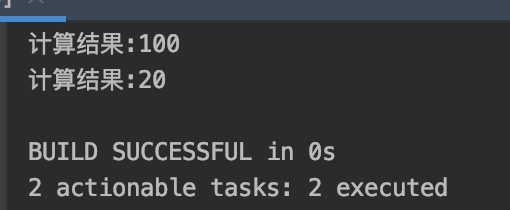简单的一个实例:
public class JavaTest { public static void main(String[] args) { JavaTest javaTest = new JavaTest(); System.out.println("计算结果:"+ javaTest.computer(10,i -> i*i)); System.out.println("计算结果:" + javaTest.computer(10,a -> a+a)); } public int computer(int a,Function<Integer,Integer> function){ int result = function.apply(a); return result; } }

/** * Applies this function to the given argument. * * @param t the function argument * @return the function result */ R apply(T t);
public interface Function<T, R>
Function中apply方法接收一个T,返回一个R,对应着Function<T, R>,T代表入参,R代表返回类型。
Function中另外两个方法:
public static void main(String[] args) { JavaTest javaTest = new JavaTest(); System.out.println("计算结果:"+ javaTest.computer1(10,a -> a * a ,a -> a+a)); System.out.println("计算结果:" + javaTest.computer2(10,a -> a * a ,a -> a+a)); } public int computer1(int a ,Function<Integer,Integer> function1,Function<Integer,Integer>function2){ return function1.compose(function2).apply(a); } public int computer2(int a ,Function<Integer,Integer> function1,Function<Integer,Integer>function2){ return function1.andThen(function2).apply(a); }
/** * Returns a composed function that first applies the {@code before} * function to its input, and then applies this function to the result. * If evaluation of either function throws an exception, it is relayed to * the caller of the composed function. * * @param <V> the type of input to the {@code before} function, and to the * composed function * @param before the function to apply before this function is applied * @return a composed function that first applies the {@code before} * function and then applies this function * @throws NullPointerException if before is null * * @see #andThen(Function) */ default <V> Function<V, R> compose(Function<? super V, ? extends T> before) { Objects.requireNonNull(before); return (V v) -> apply(before.apply(v)); }
compose先执行before方法,再将其返回值作为入参执行原function方法。
/** * Returns a composed function that first applies this function to * its input, and then applies the {@code after} function to the result. * If evaluation of either function throws an exception, it is relayed to * the caller of the composed function. * * @param <V> the type of output of the {@code after} function, and of the * composed function * @param after the function to apply after this function is applied * @return a composed function that first applies this function and then * applies the {@code after} function * @throws NullPointerException if after is null * * @see #compose(Function) */ default <V> Function<T, V> andThen(Function<? super R, ? extends V> after) { Objects.requireNonNull(after); return (T t) -> after.apply(apply(t)); }
andThen方法,先执行原function方法,再将其返回值作为入参执行after方法
System.out.println("计算结果:"+ javaTest.computer1(10,a -> a * a ,a -> a+a));
10 + 10 -> 20 * 20 = 400
System.out.println("计算结果:" + javaTest.computer2(10,a -> a * a ,a -> a+a));
10 * 10 -> 100 + 100 = 200
